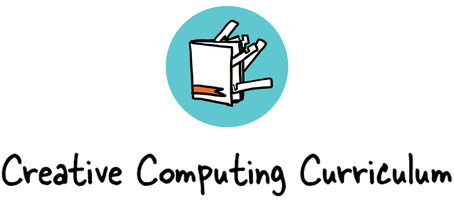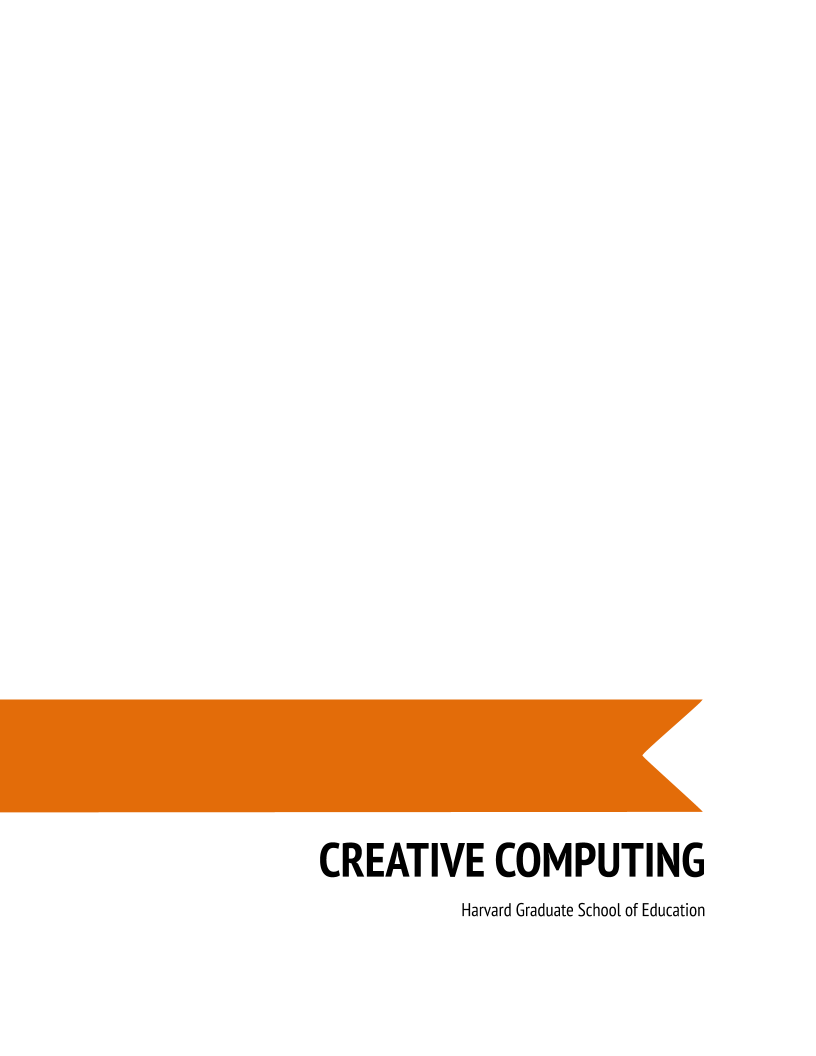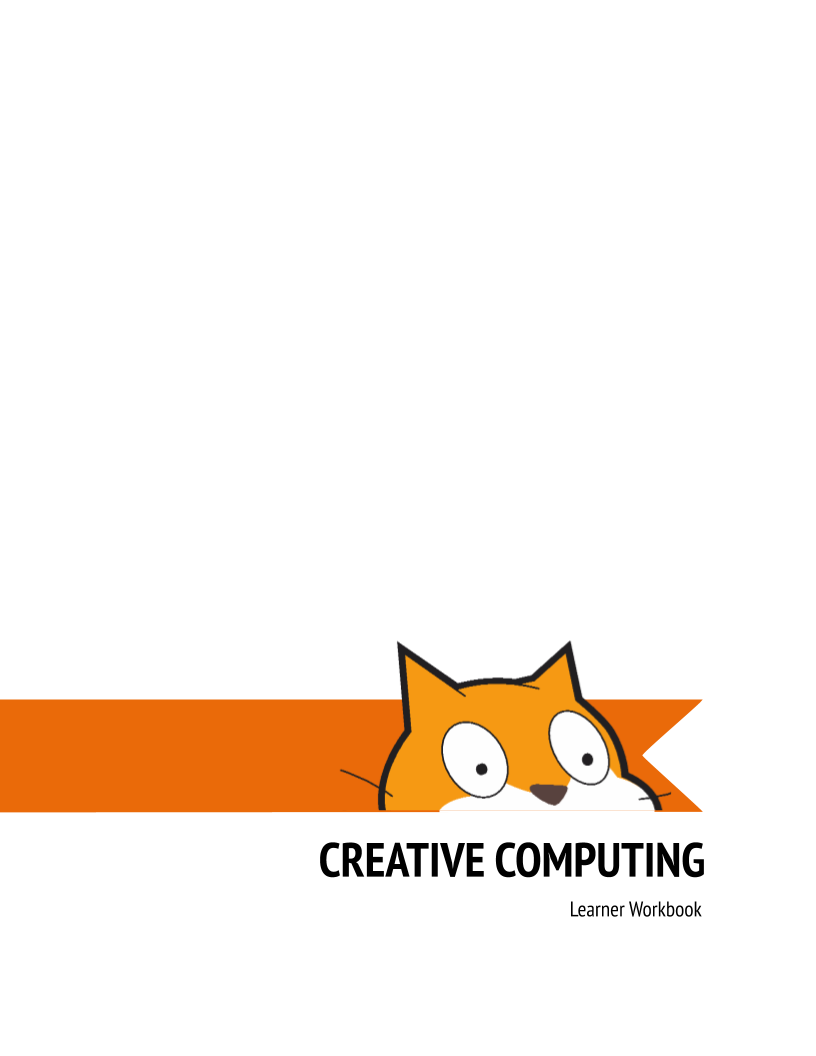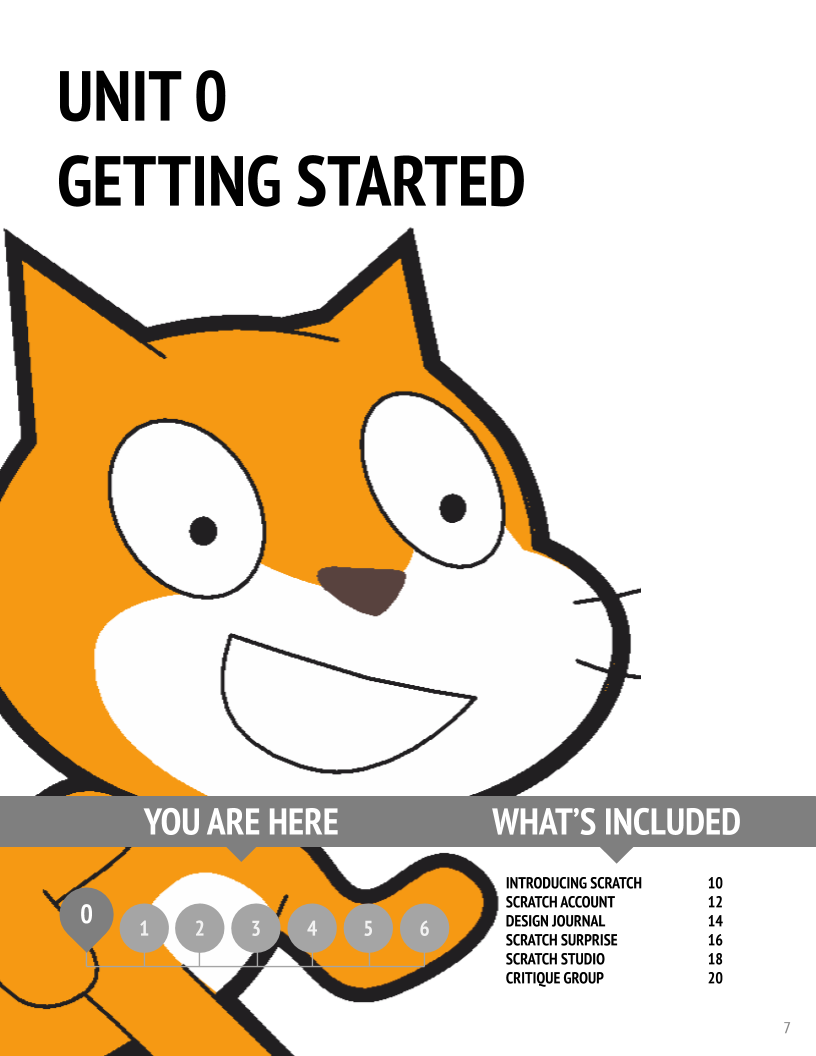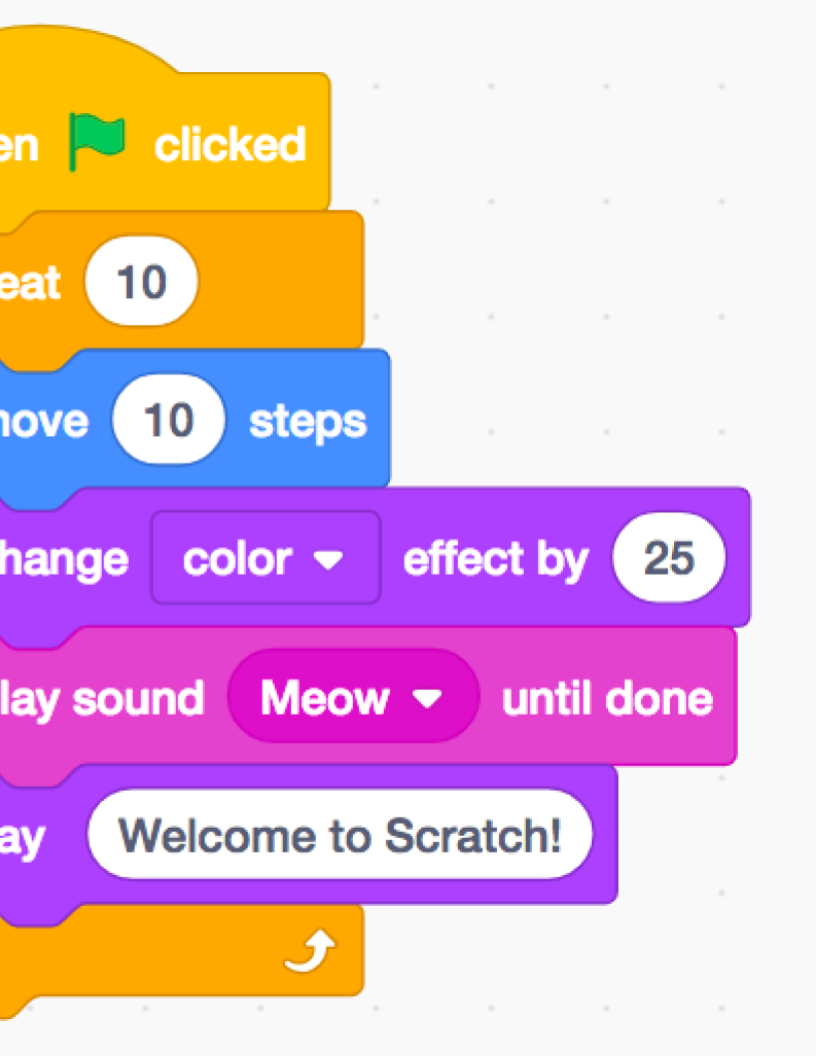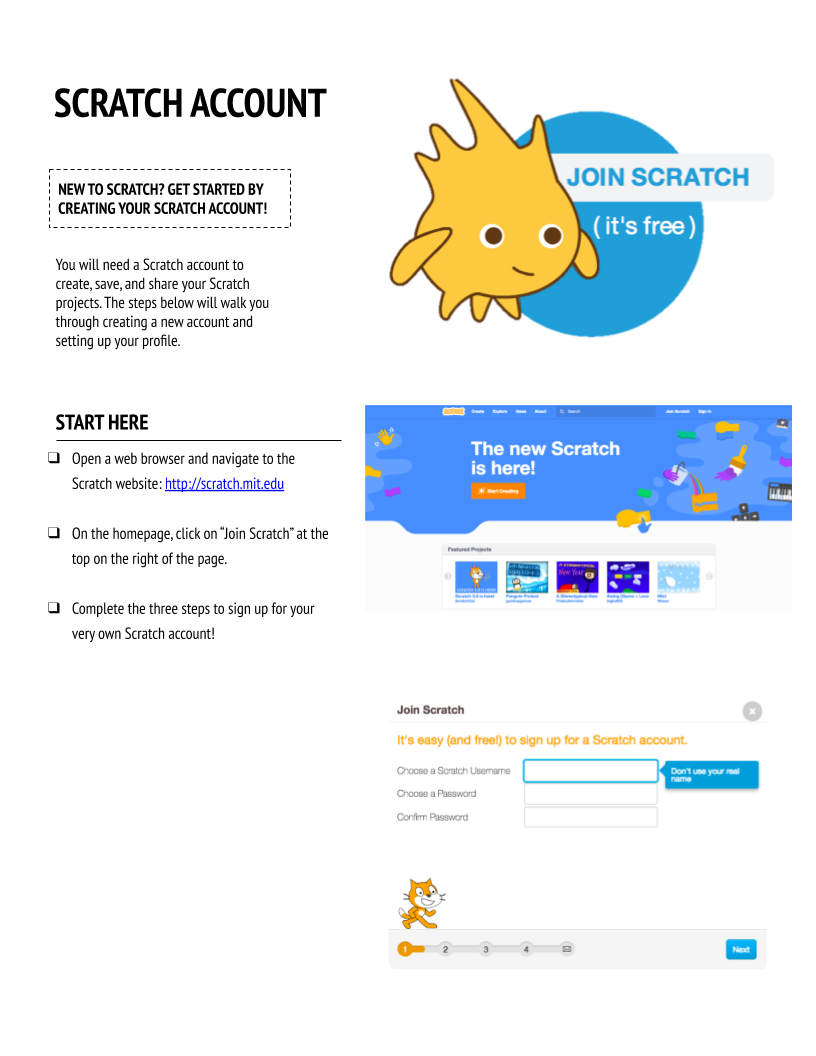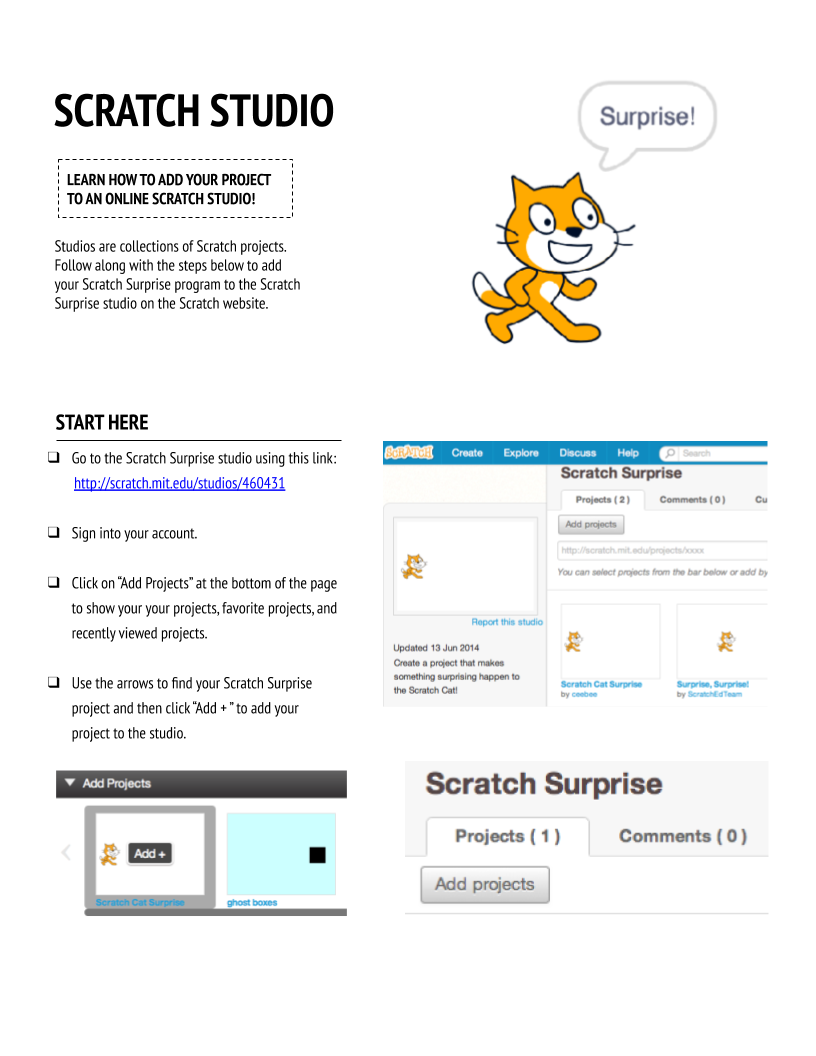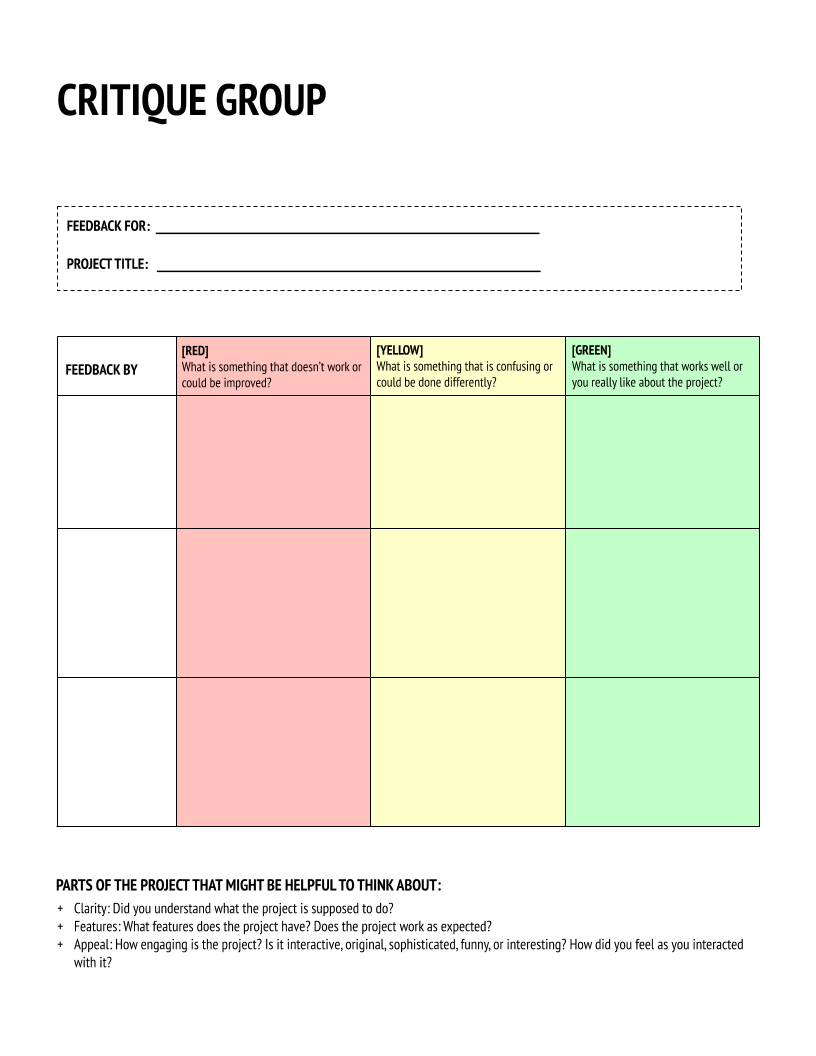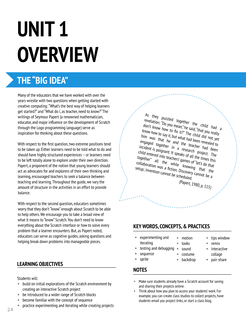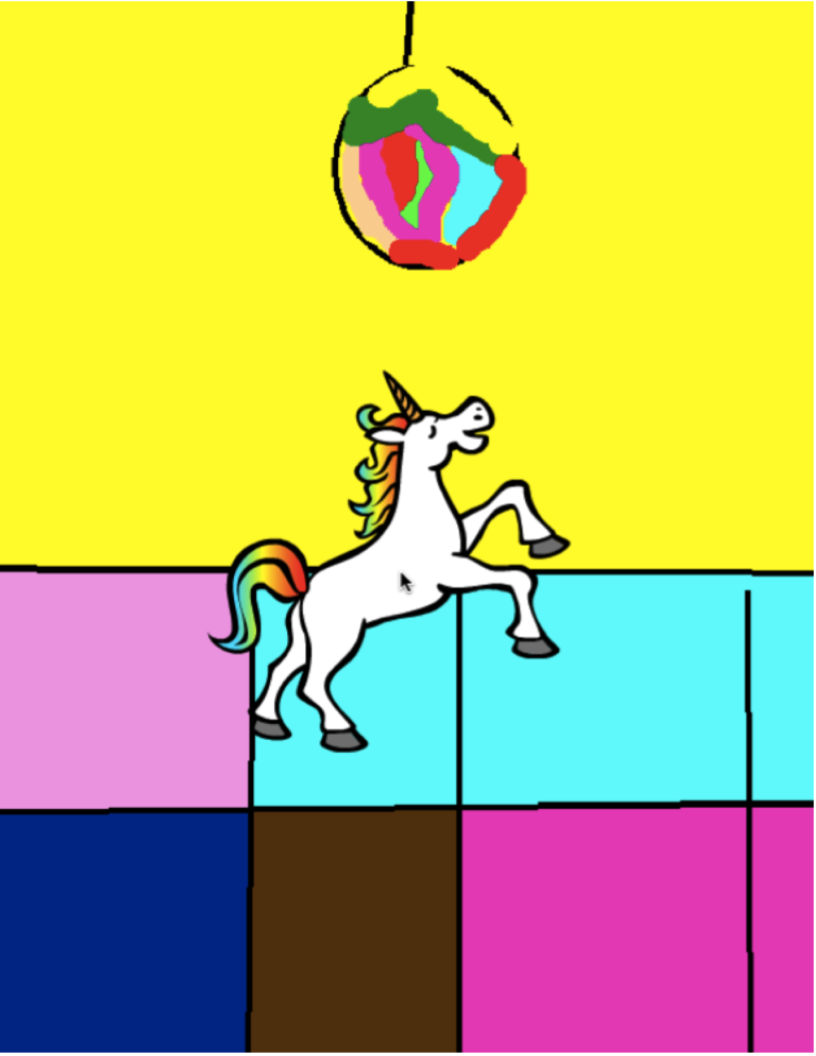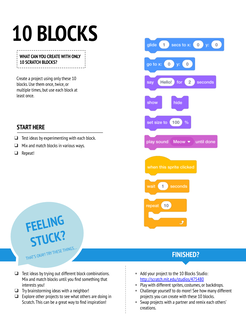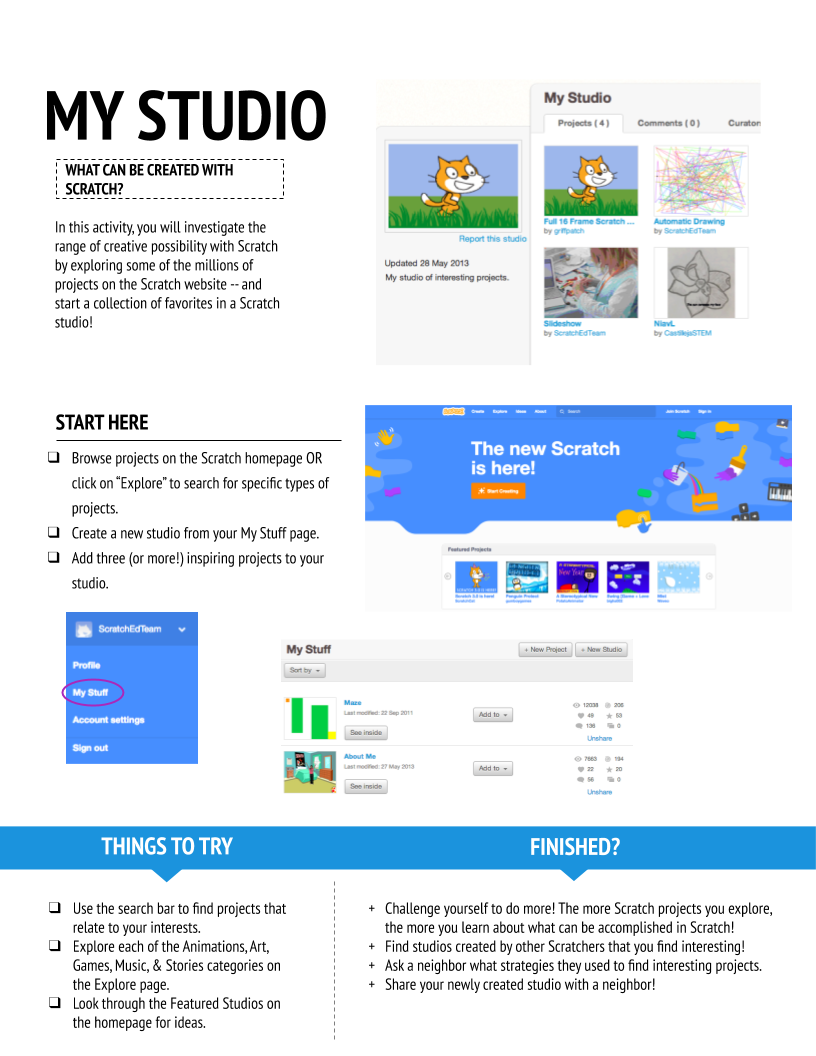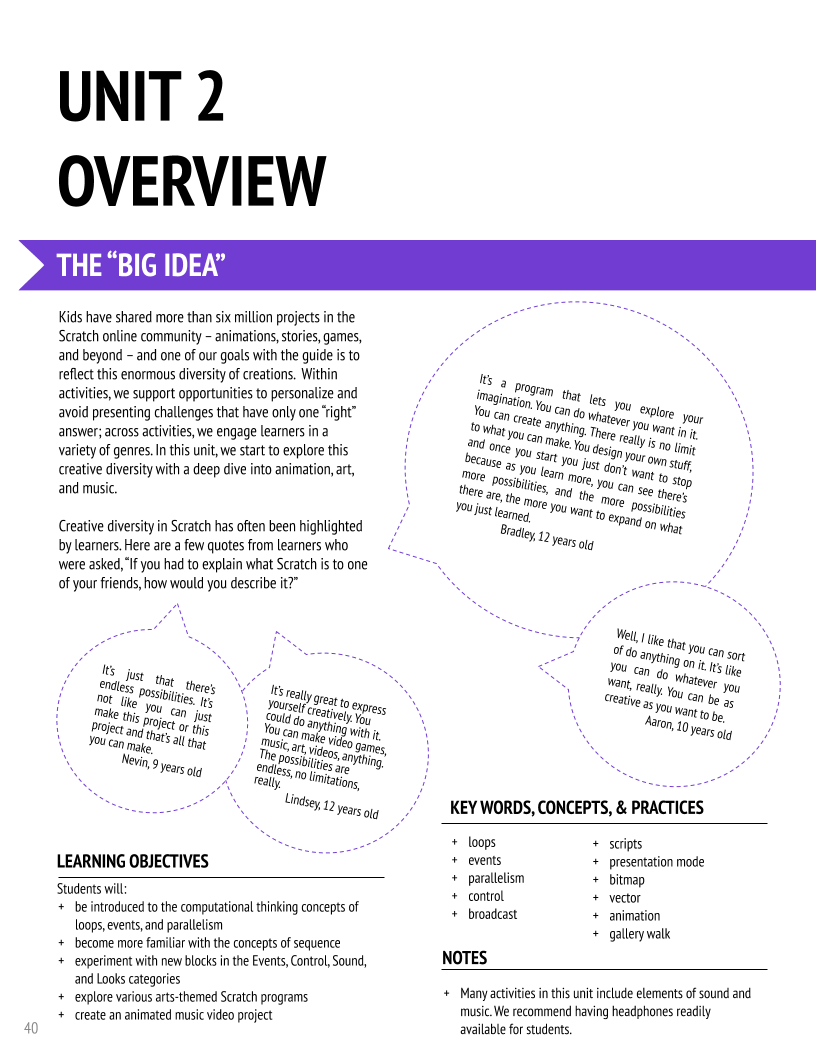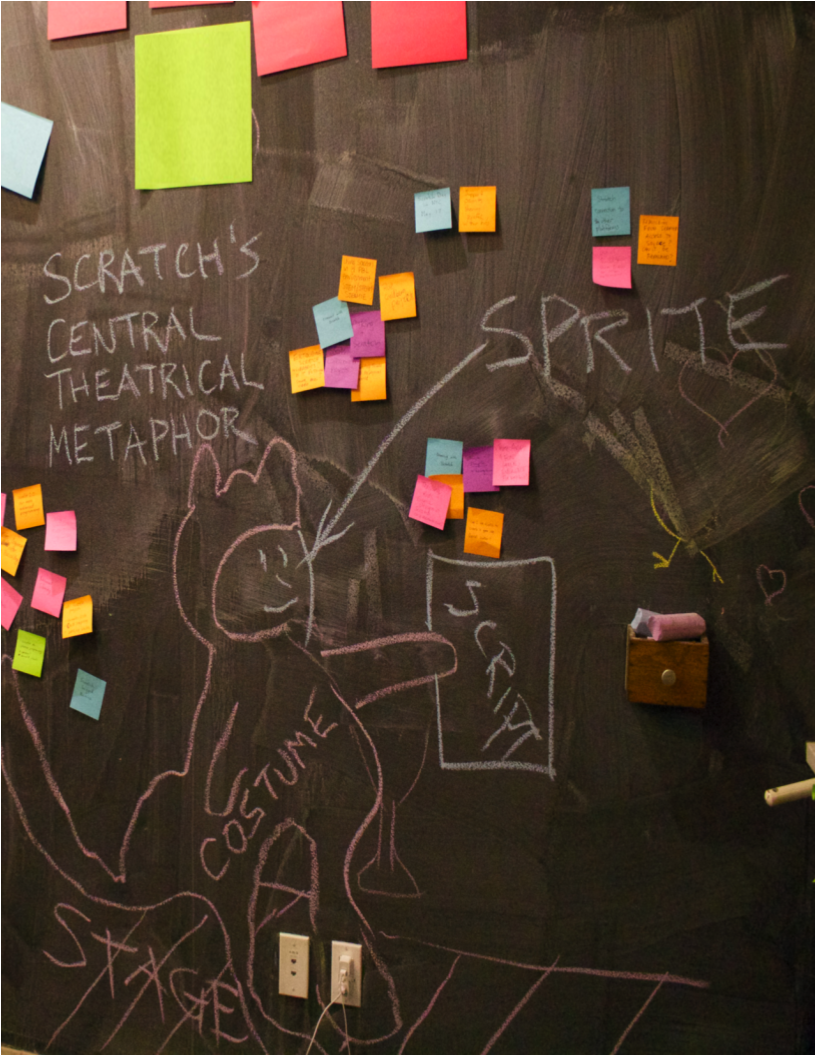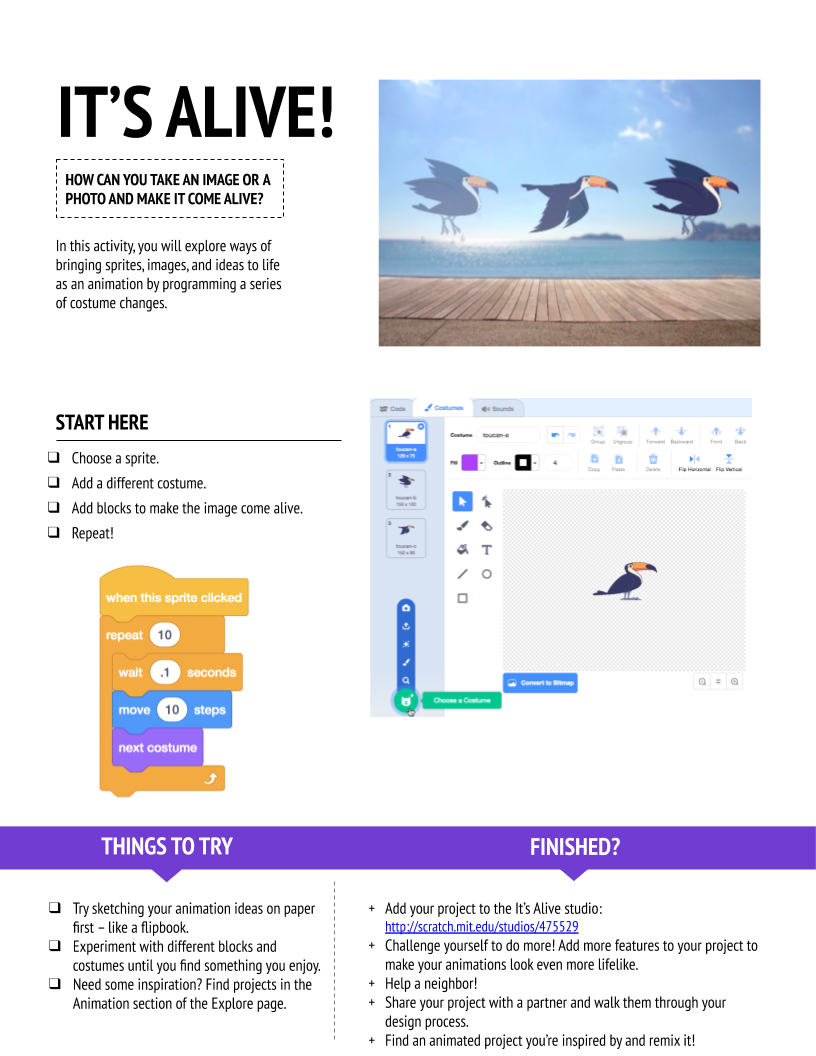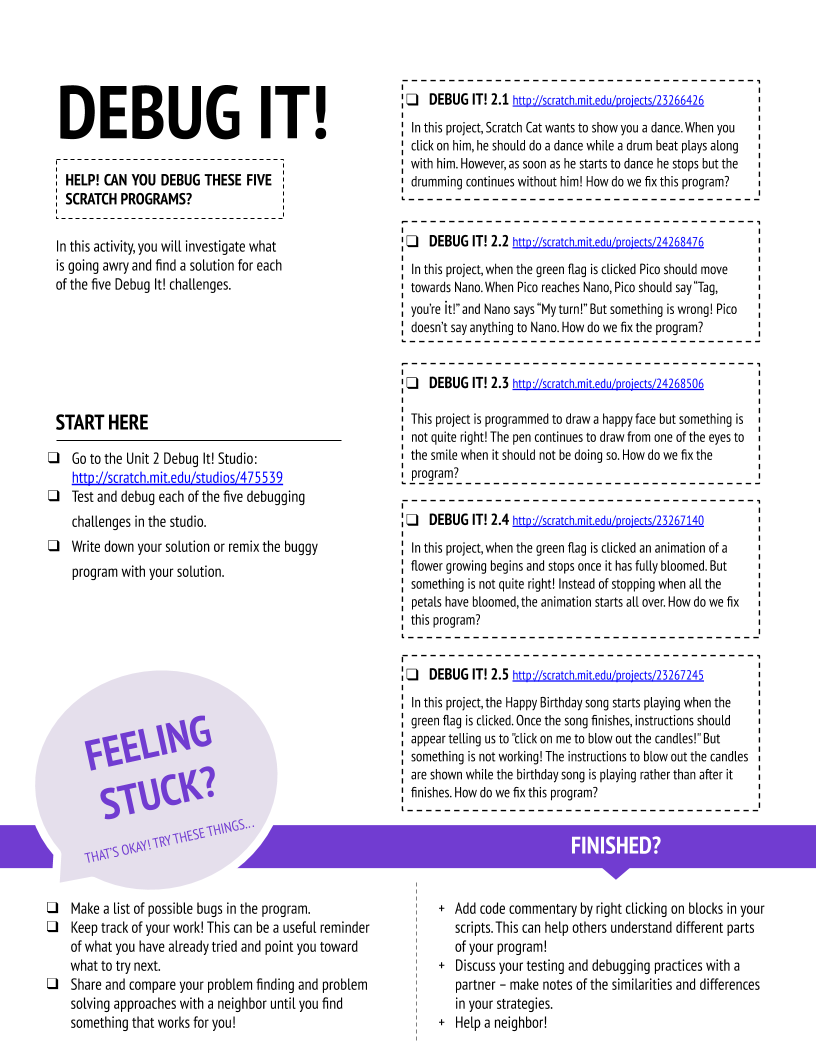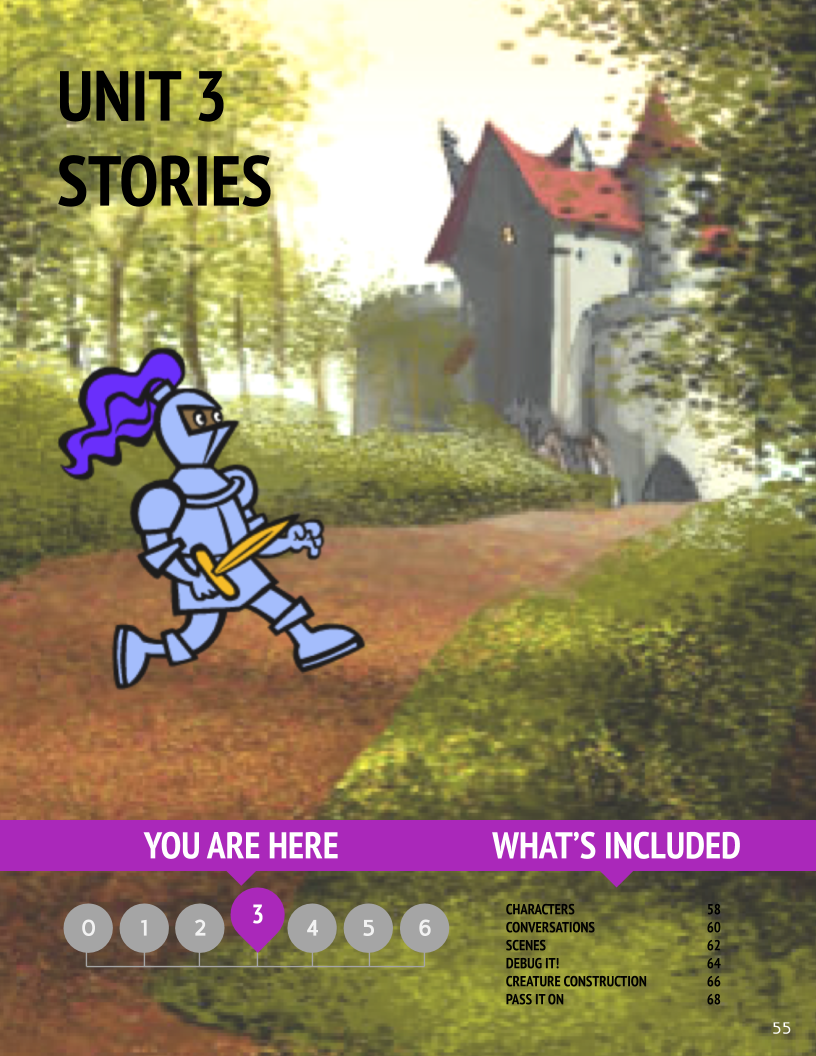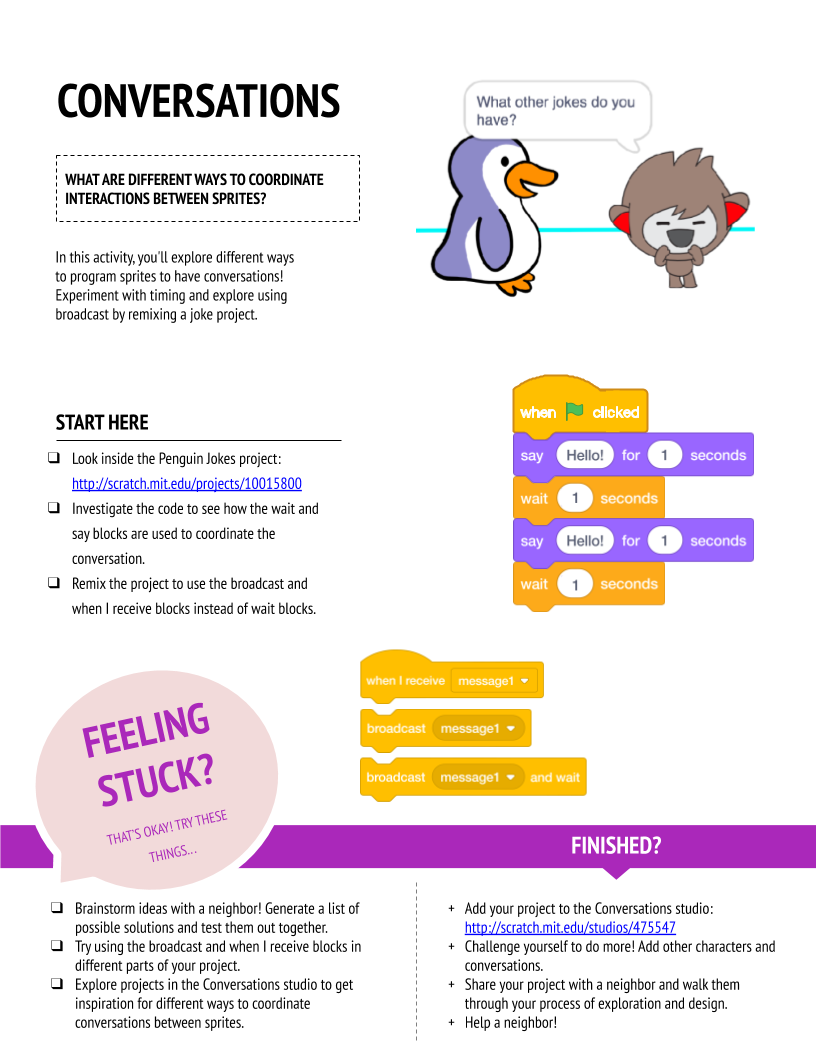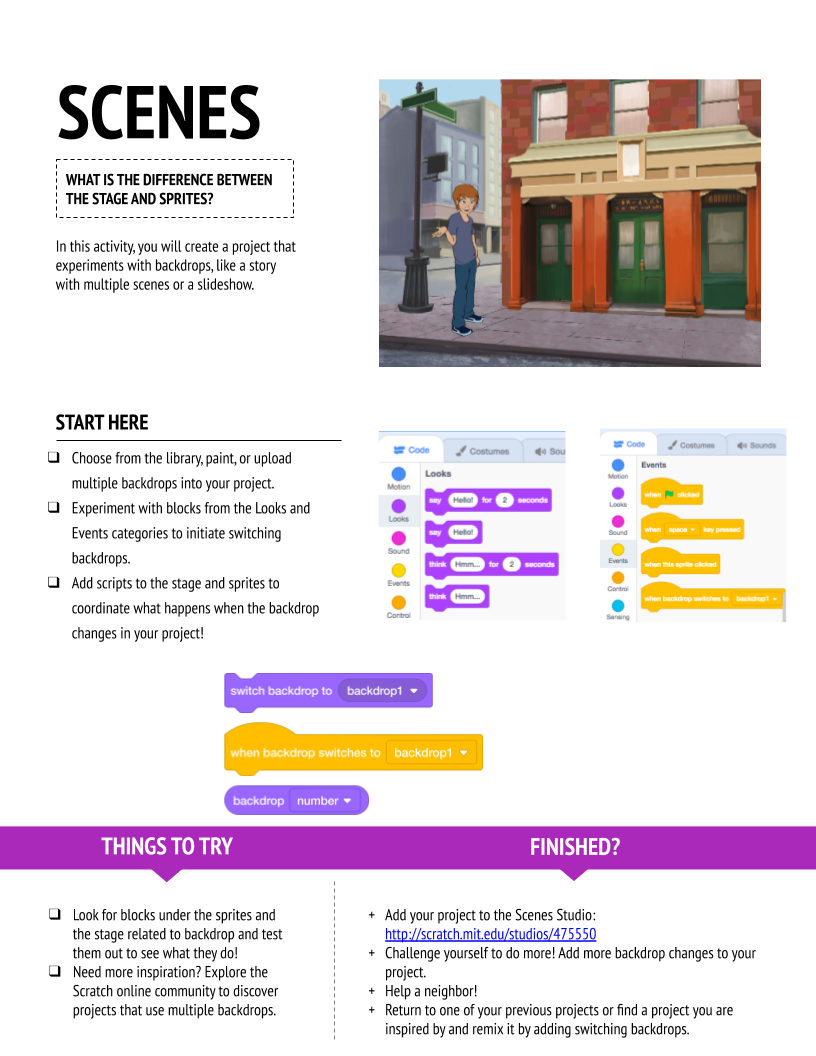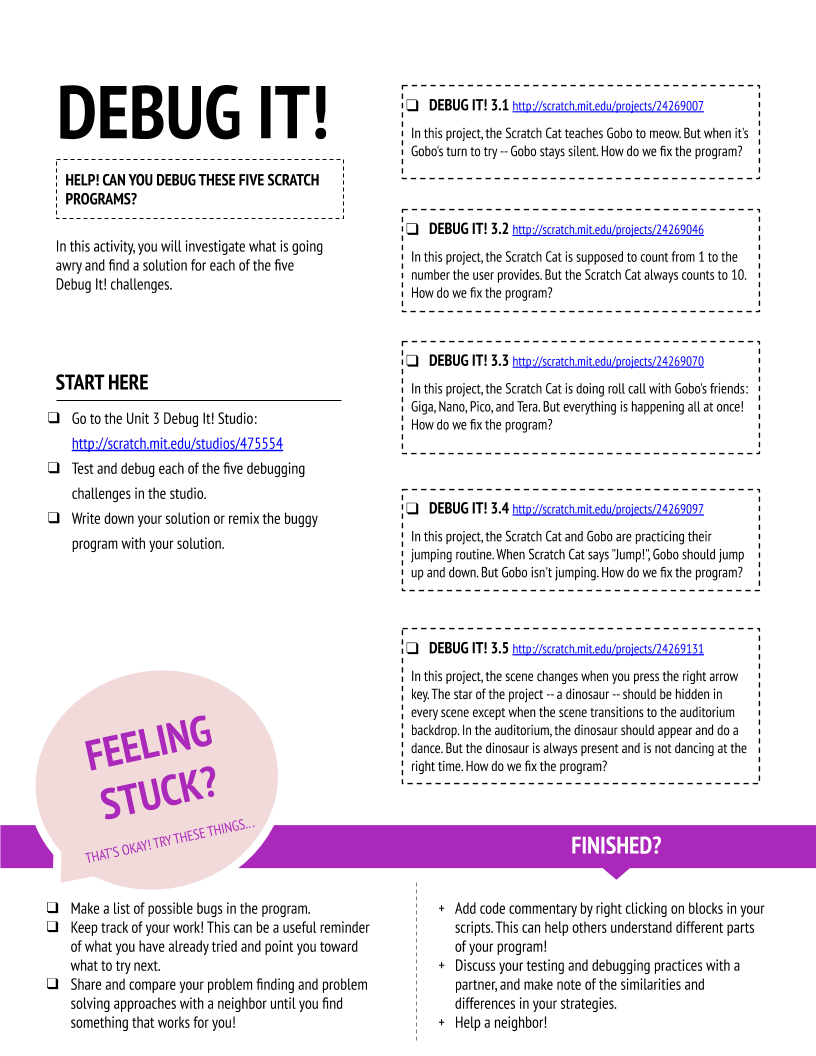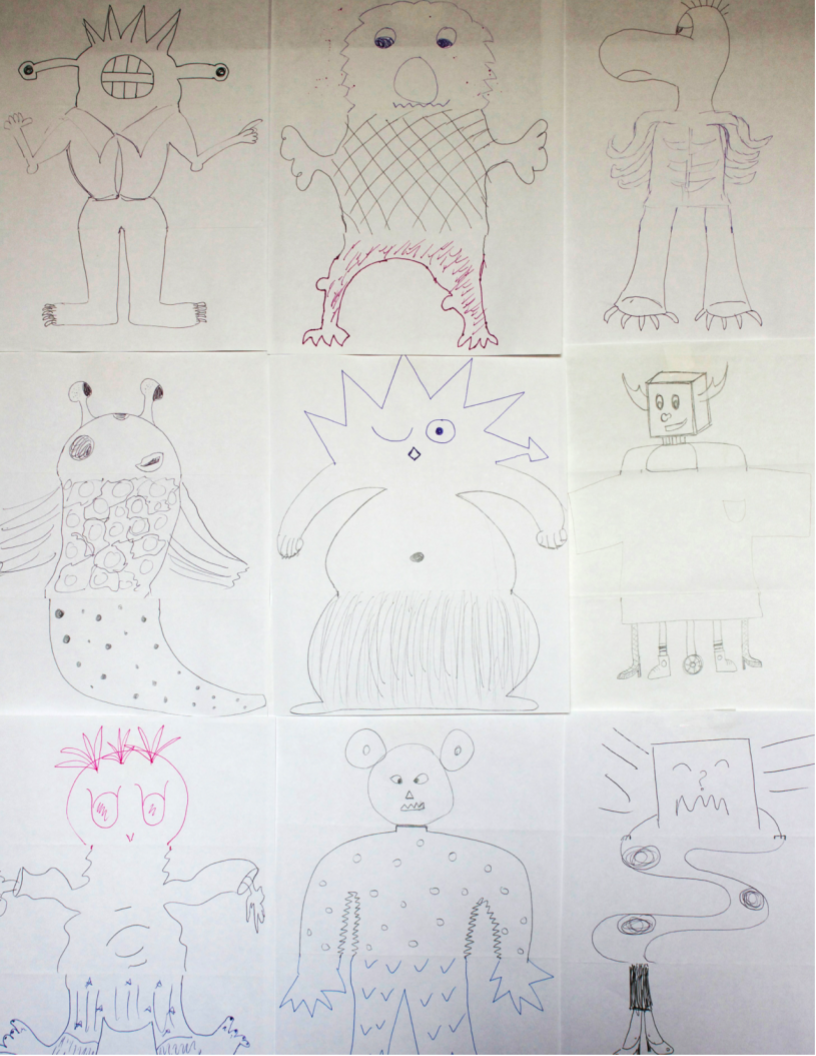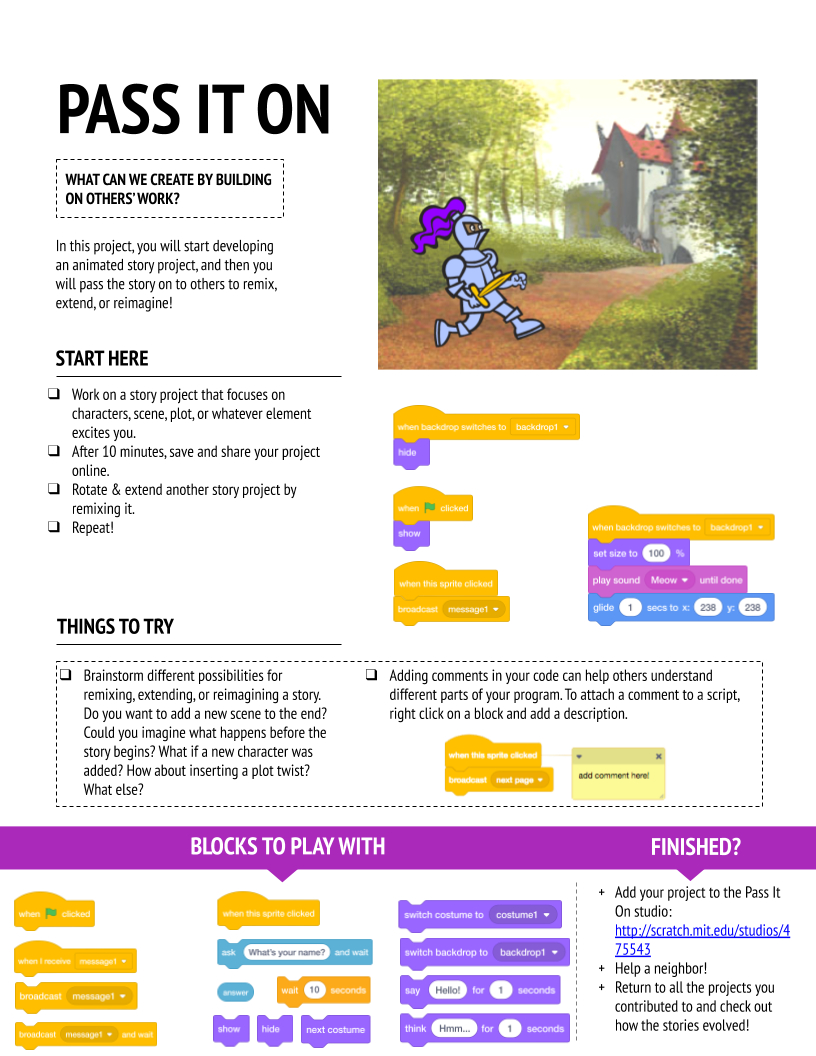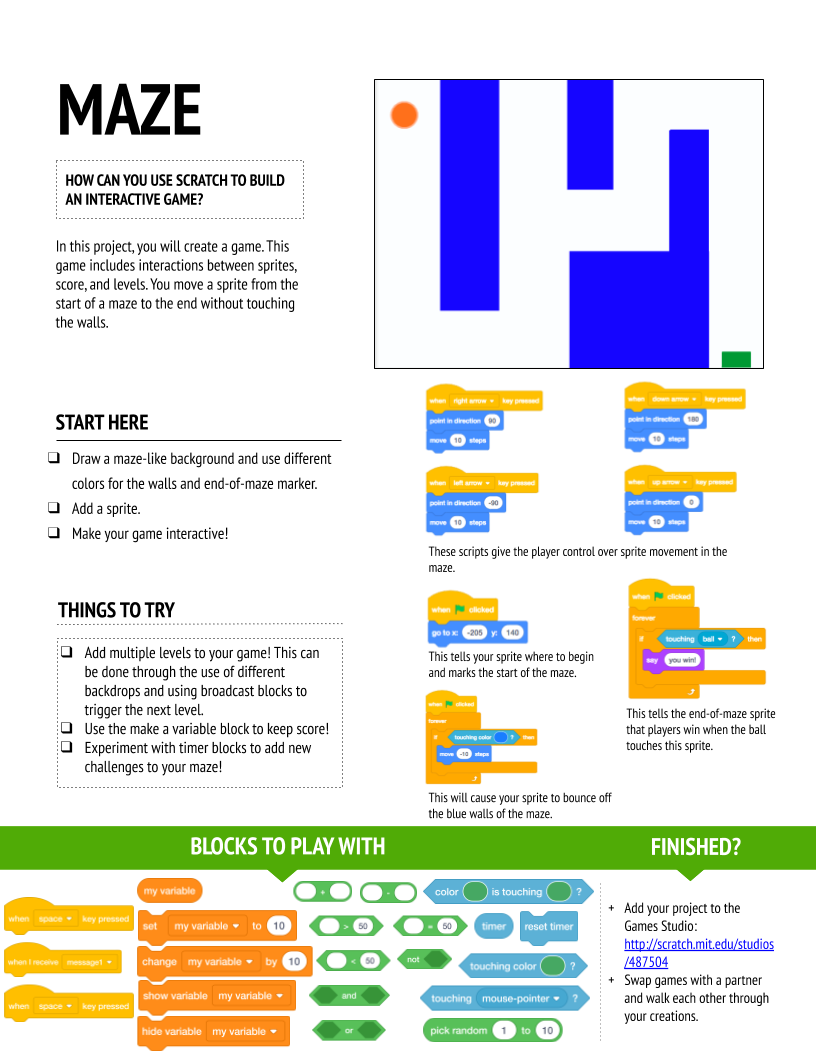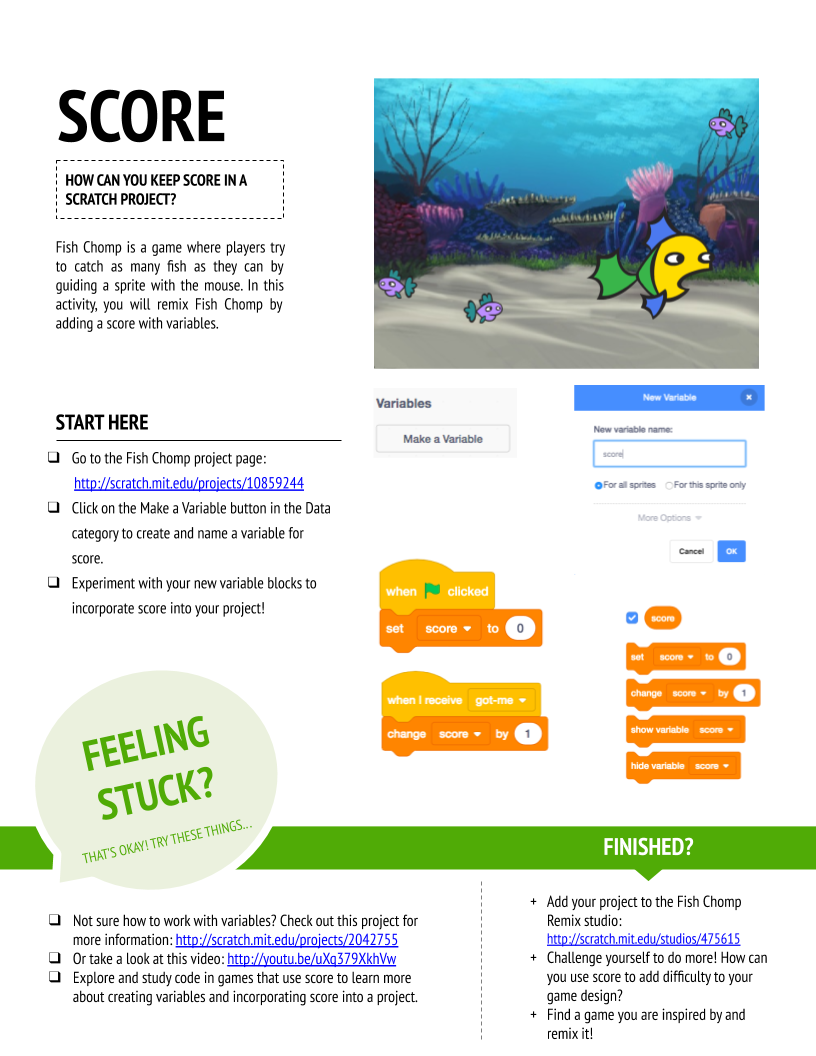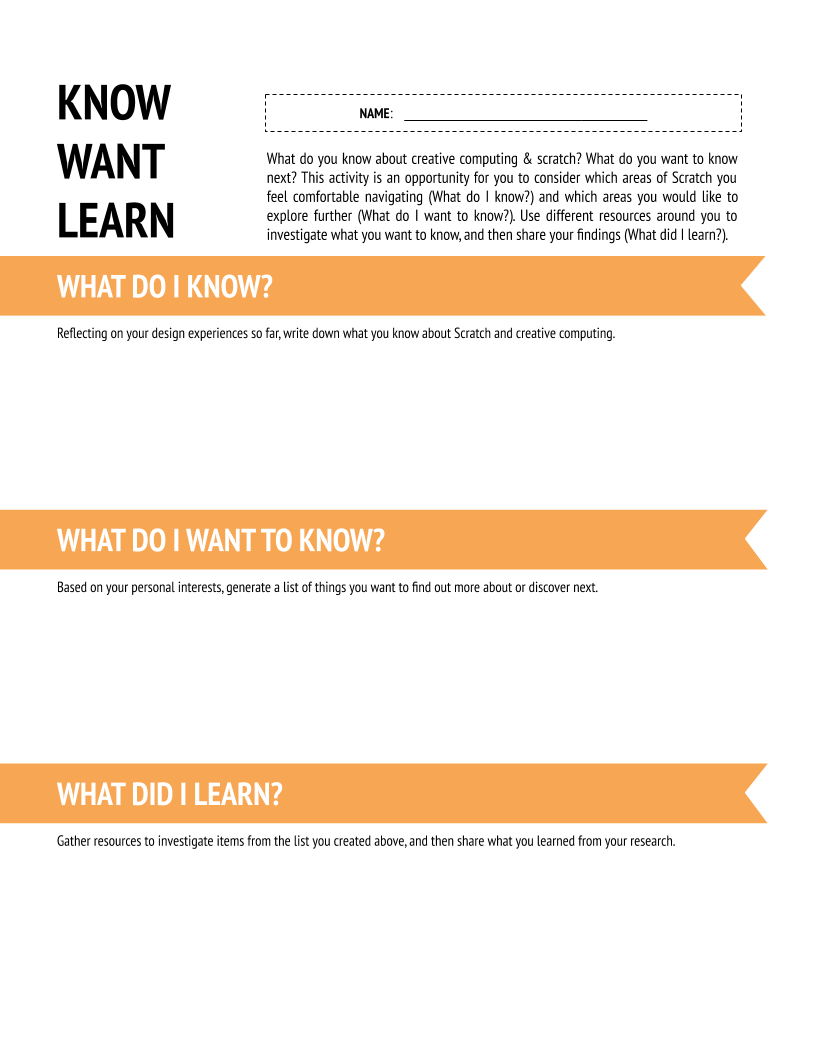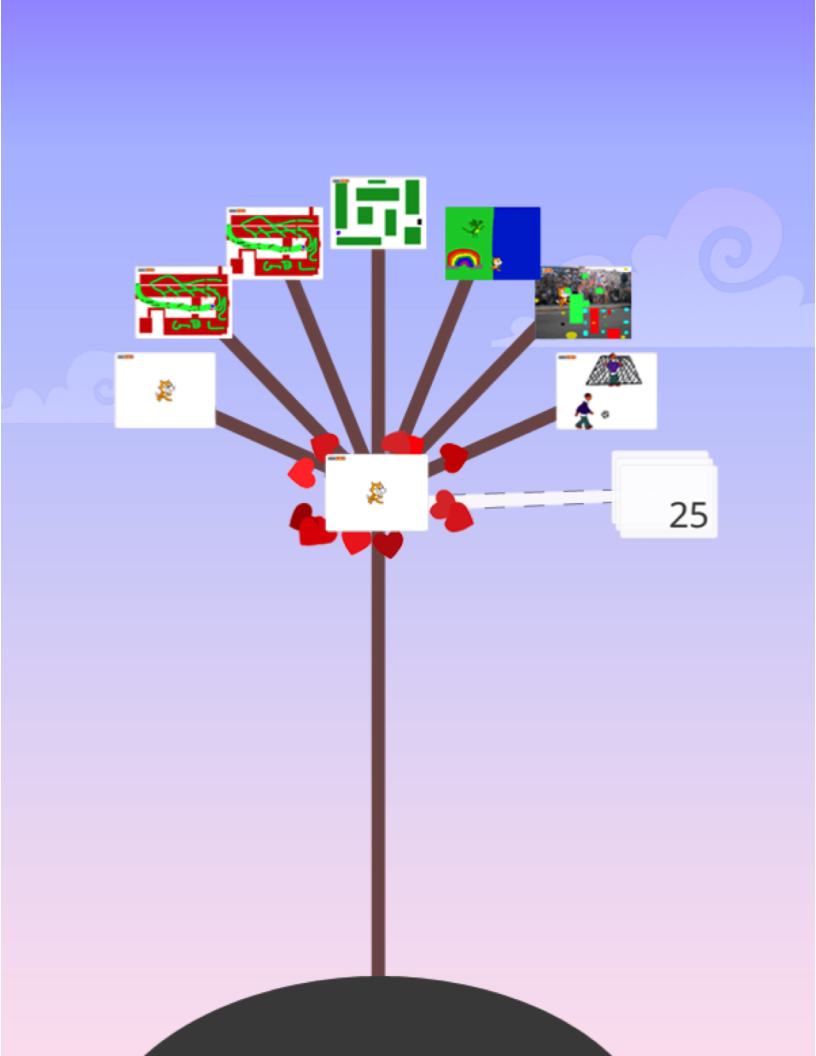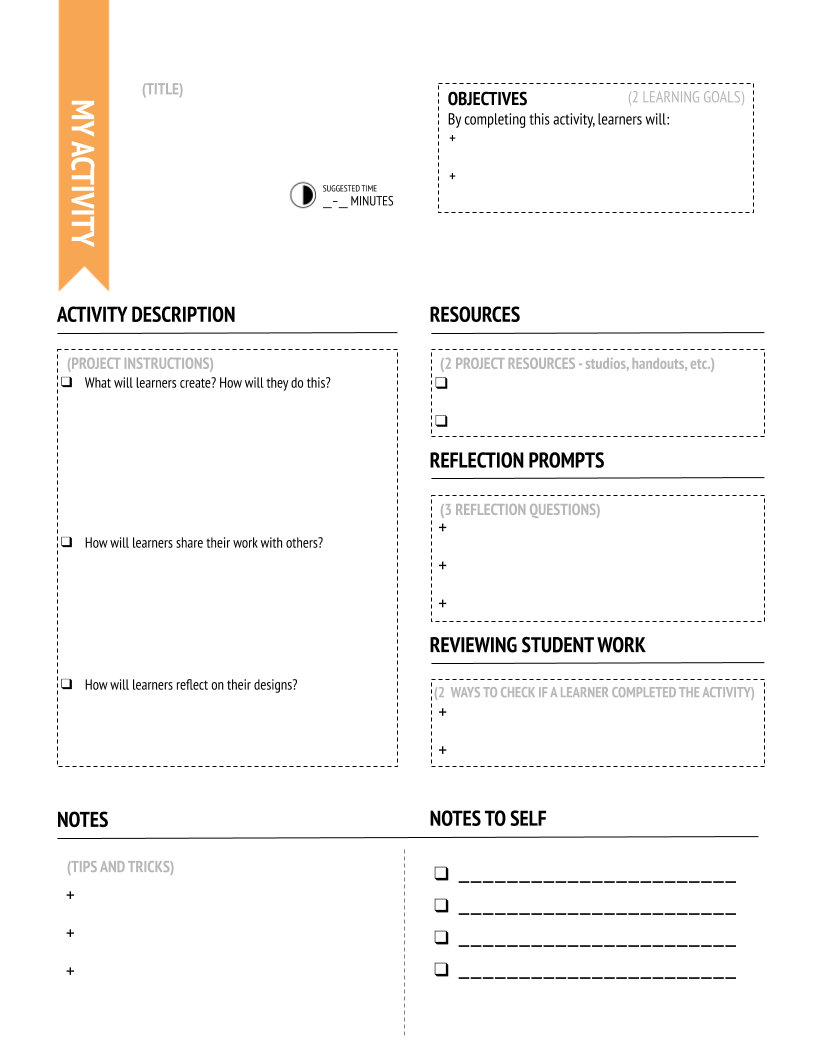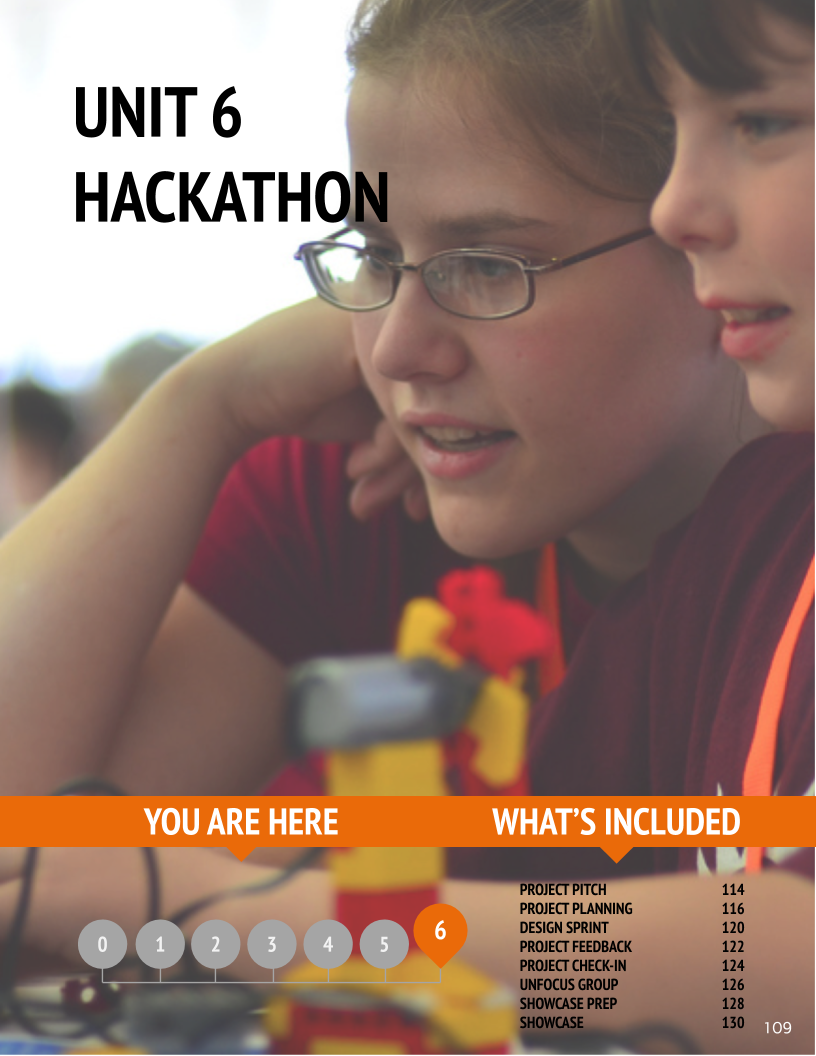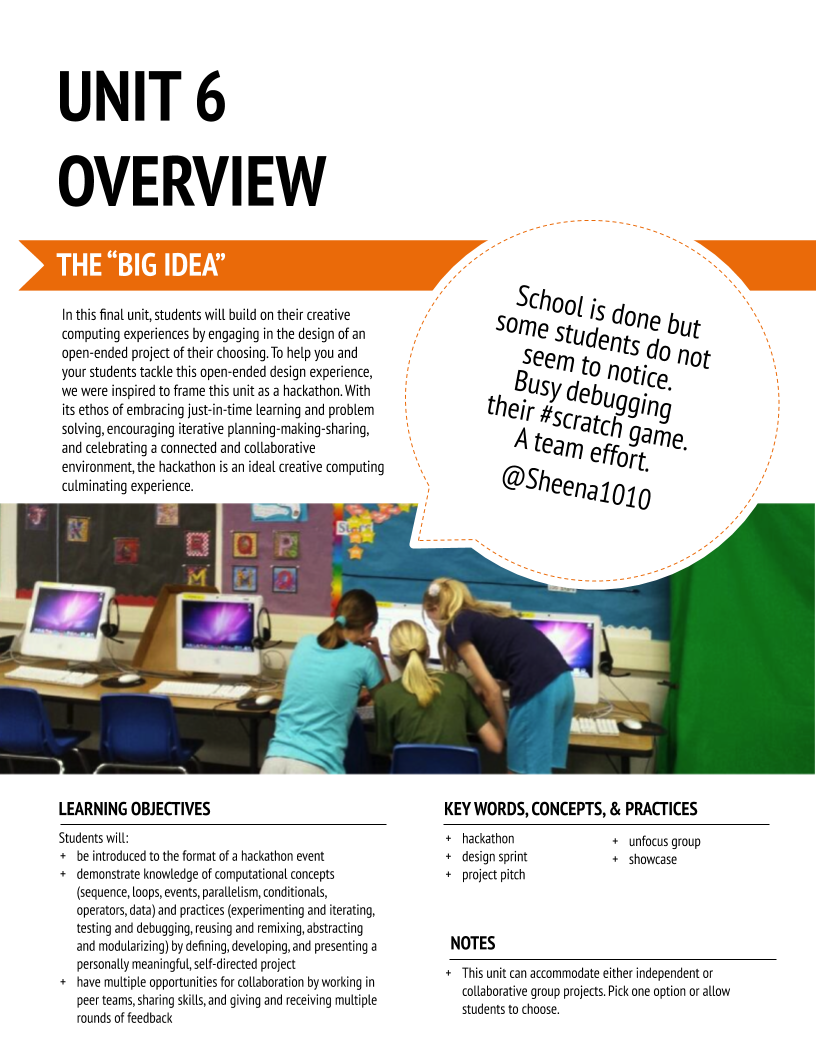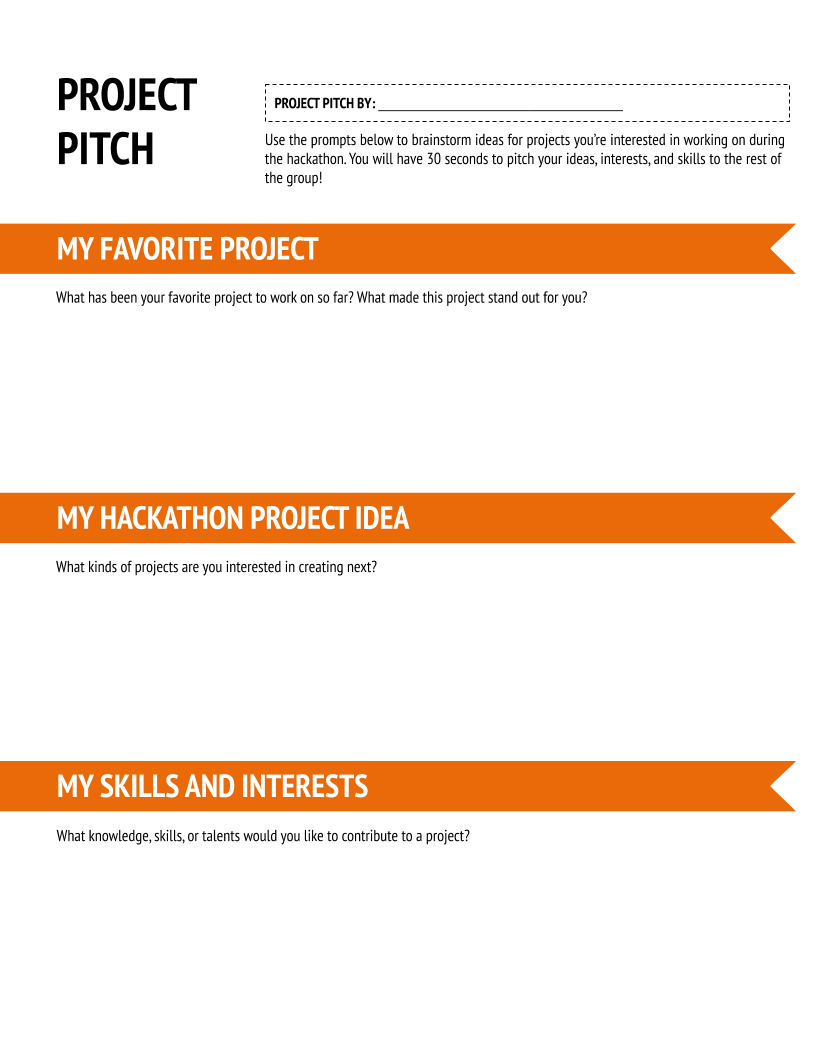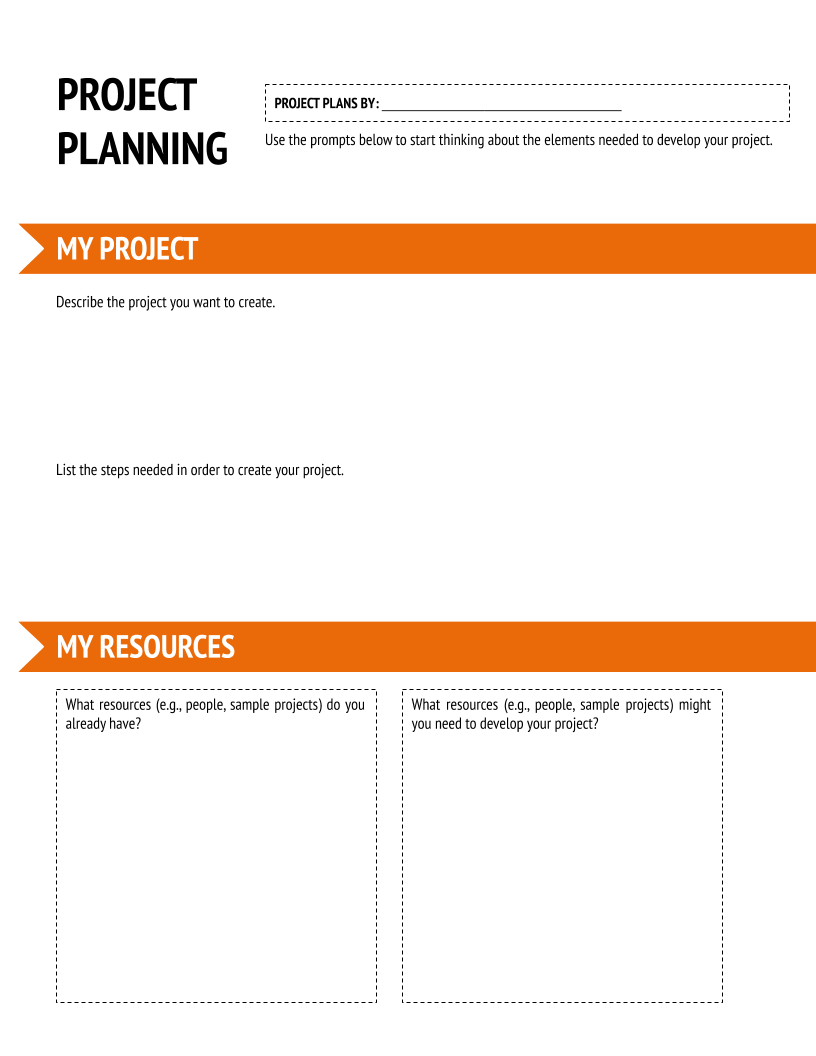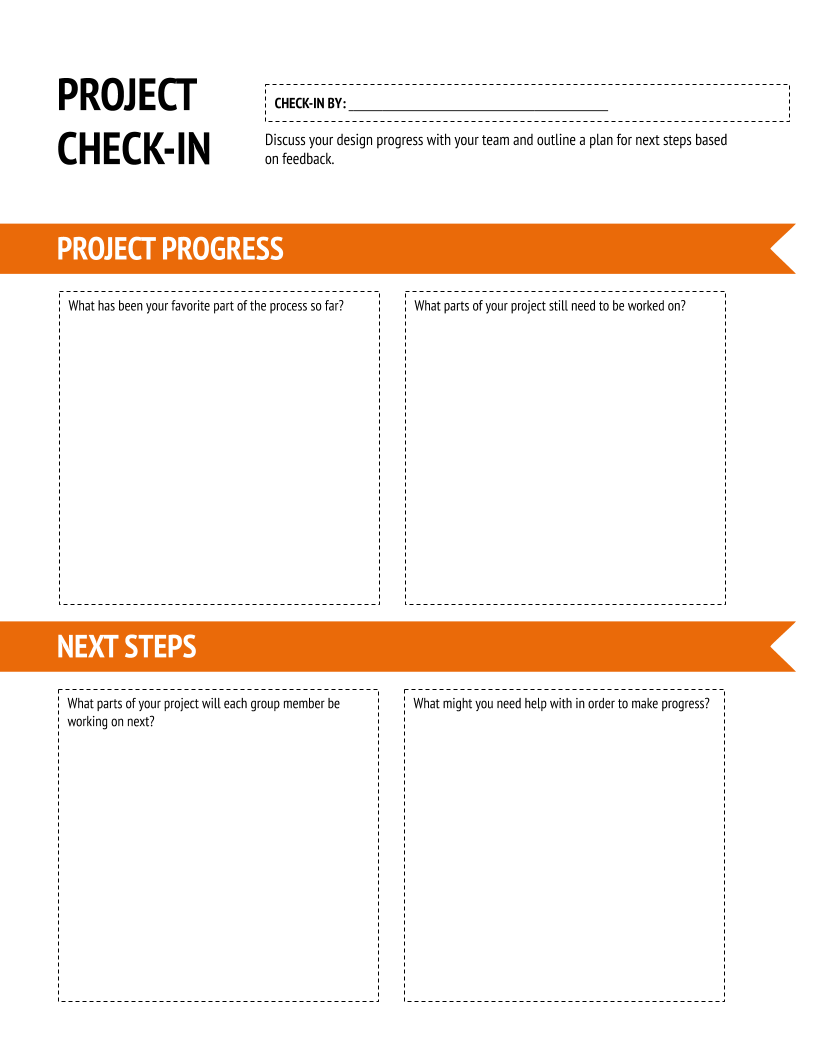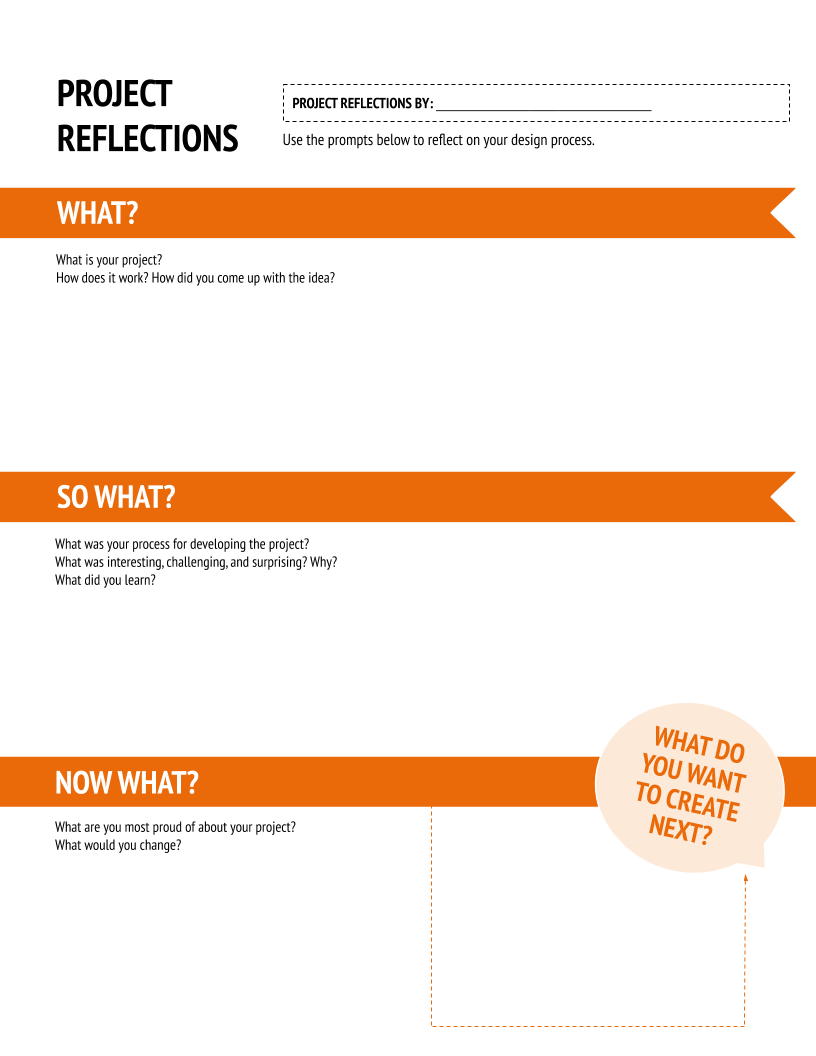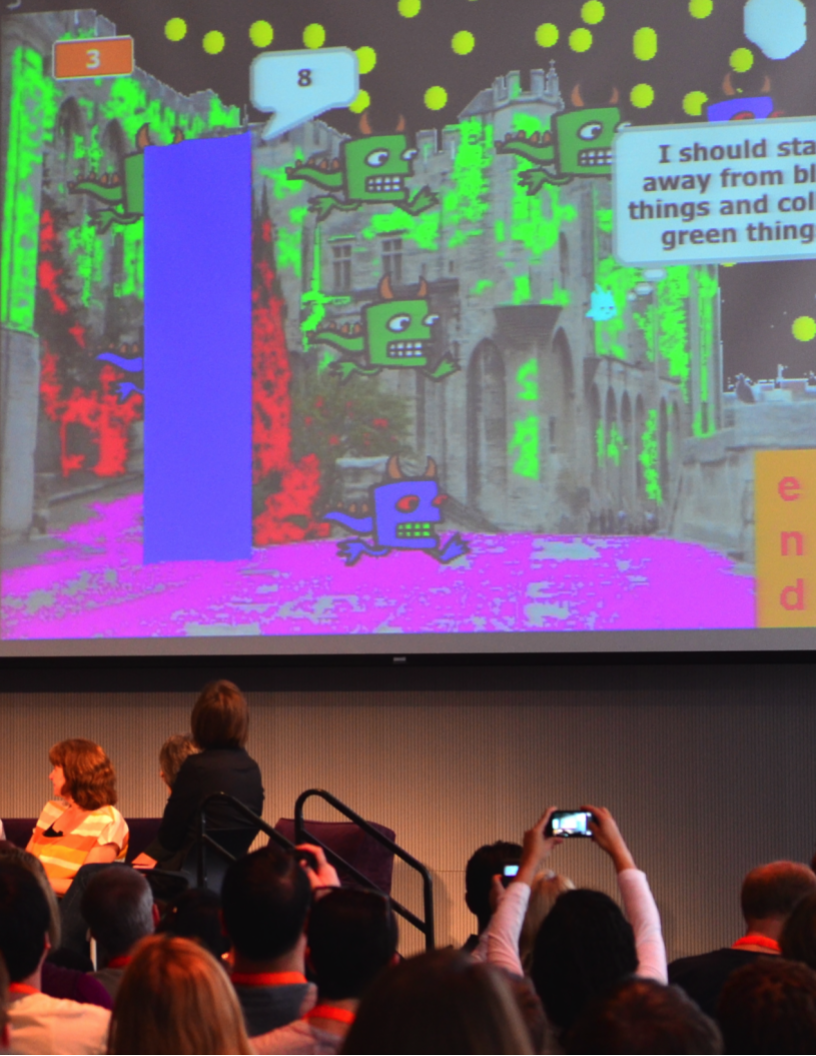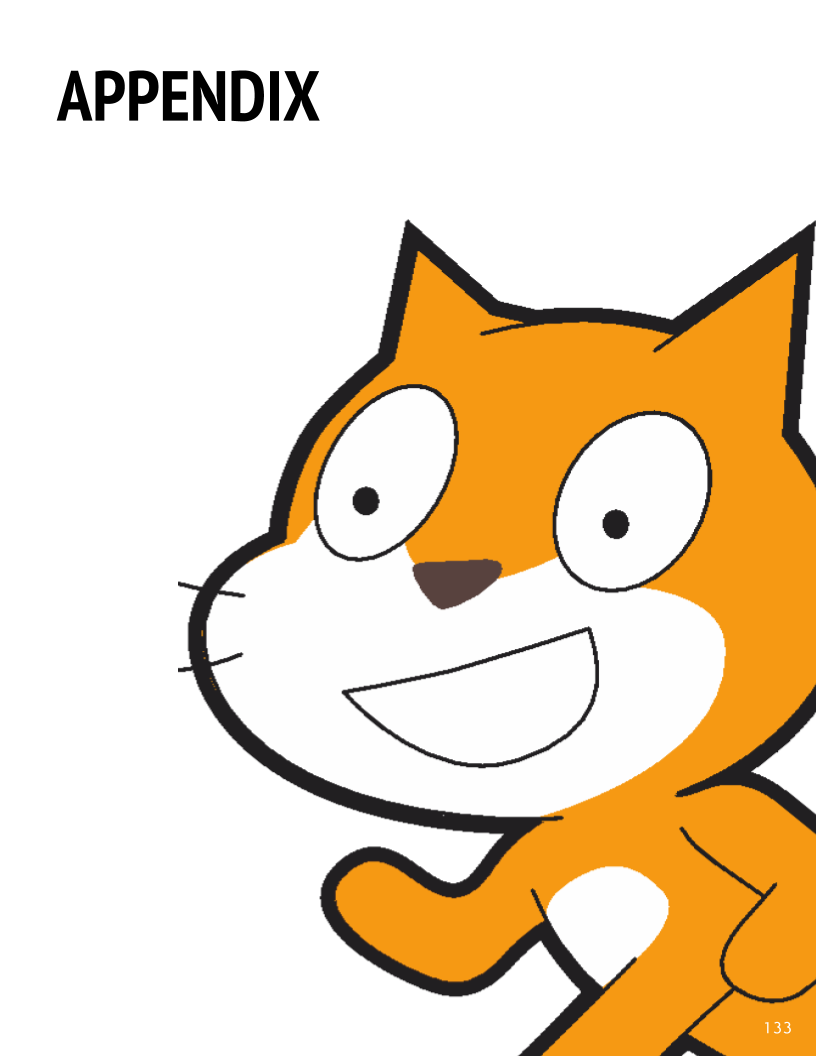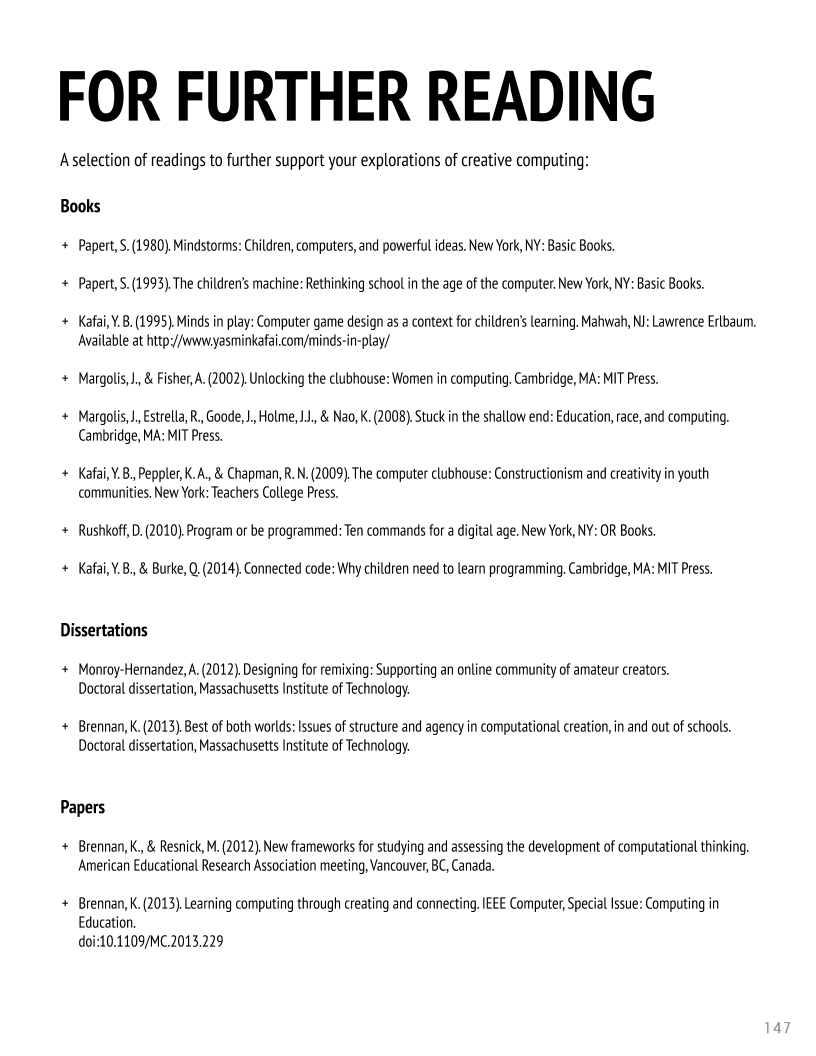The Creative Computing Curriculum is a collection of ideas, strategies, and activities for an introductory creative computing experience using the Scratch programming language. The activities are designed to support familiarity and increasing fluency with computational creativity and computational thinking. The changes made to this most recent edition of the curriculum include images of blocks and projects, and minor content revisions to reflect the new Scratch 3.0 website. This edition of the curriculum is now available in Google Slides as individual units, activities, or the full curriculum.
Creative Computing CurriculumDownload the entire curriculum or explore various other options below.
Creative Computing Curriculum
Creative Computing Curriculum with Learner Reflection Pages
Creative Computing Learner Workbook
Background
Translations
Download PDF in Japanese, courtesy of Tetsushiro Oyama
Download PDF in Spanish, courtesy of Scratch al Sur Download PDF in Dutch, courtesy of Cobie van de Ven Make a copy of Google Slides version in Portuguese, courtesy of Rede Brasileira de Aprendizagem Criativa and UEFS Download PDFs in Romanian, courtesy of Asociatia Cartea Daliei (Dalia's Book) from Romania Download PDFs in Polish, courtesy of Joanna Apanasewicz and Krzysztof Jaworski from Digital Coaction Association Download PDF in Burmese, courtesy of Lat Twae Education |
Unit 0: Getting StartedReady to get started? This unit is designed for those who are completely new to Scratch. From exploring inspiring projects, to creating a Scratch account, to having an initial experience playing with the Scratch project editor, each activity is designed to guide you and your students through the process of getting started with Scratch.
Unit Overview
Introducing Scratch
Scratch Account
Design Journal
Scratch Surprise
Scratch Studio
Critique Group
|
Unit 1: ExploringThis unit includes a mix of structured and open-ended activities that engage students in exploration of the key concept of sequence – identifying and specifying an ordered series of instructions. This is often a powerful moment for students: they’re telling the computer what to do, by translating their ideas into blocks of computer code.
Unit Overview
Programmed to Dance
Step-By-Step
10 Blocks
My Studio
Debug It!
About Me
|
Unit 2: AnimationsInspired by the theatre metaphor, this unit’s arts-themed activities are designed to help students explore the computational concepts of loops, events, and parallelism, culminating in the design of personalized music videos.
Unit Overview
Performing Scripts
Build-A-Band
Orange Square, Purple Circle
It's Alive!
Debug It!
Music Video
|
Unit 3: StoriesThis unit focuses on helping students develop their storytelling and remixing abilities through a variety of hands-on and off-computer design activities, providing opportunities for students to work collaboratively and build on the creative work of others. Building on initial experiences from Unit 2, the activities in this unit are designed to help students develop deeper fluency in the computational concepts of events and parallelism and the computational practices of experimenting and iterating, and reusing and remixing.
Unit Overview
Characters
Conversations
Scenes
Debug It!
Creature Construction
Pass It On
|
Unit 4: GamesIn this unit, learners will become game designers and experience creating their own game project. Guided by the activities in this unit, students will be introduced to game mechanics and game development while building understandings of conditionals, operators, data, and the computational practices of abstracting and modularizing.
Unit Overview
Dream Game List
Starter Games
Score
Extensions
Interactions
Debug It!
|
Unit 5: Diving DeeperRather than focusing on a particular theme or genre like the three previous units, this unit is intended to create a space for reviewing and reflecting on prior work. This unit’s activities are especially flexible, diving deeper into creative computing by revisiting challenges, extending skills, or refining practices.
Unit Overview
Know Want Learn
Round Two
Advanced Concepts
Hardware & Extensions
Activity Design
My Debug It!
|
Unit 6: HackathonIn this final unit, students will build on their creative computing experiences by engaging in the design of an open-ended project of their choosing. To help you and your students tackle this open-ended design experience, we were inspired to frame this unit as a hackathon. With its ethos of embracing just-in-time learning and problem solving, encouraging iterative planning-making-sharing, and celebrating a connected and collaborative environment, the hackathon is an ideal creative computing culminating experience.
Unit Overview
Project Pitch
Project Planning
Design Sprint
Project Feedback
Project Check-In
Unfocus Group
Showcase Prep
Showcase
|
AppendixGlossary
Standards
Computational Thinking
For Further Reading
|
